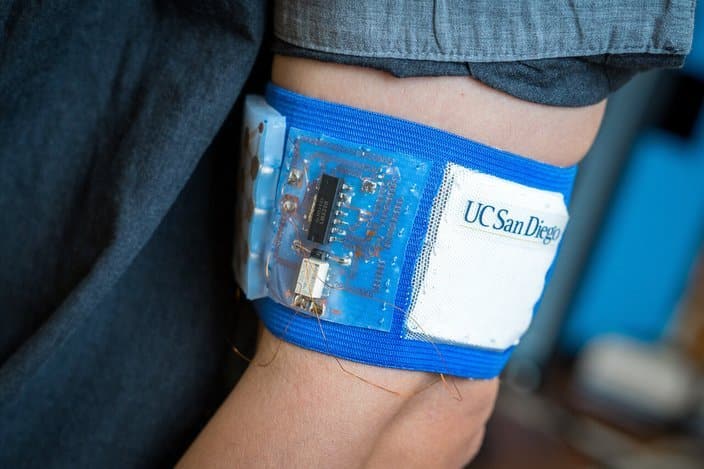A team of engineers at the University of San Diego has developed a wearable "patch" that provides personal 'air conditioning', heating or cooling the body and keeping it at a constant temperature in all weather conditions.
The project was published yesterday in the magazine Science Advances.
In addition to providing comfort to the wearer, such a device has many prospects of use in terms of energy sustainability and savings: “With a constant and comfortable body temperature there is no longer the need to activate air conditioners,” says Renkun Chen, the professor of mechanics e aerospace engineering who conducted the study.
There is a huge variety of “stand alone” heating or cooling systems to carry around. Table fans, floor fans, convectors, but none before today were wearable, flexible and easily integrated into clothing.

The patch is made of thermoelectric materials inserted as in a sandwich between two layers of elastomers made with Ecoflex, a soft material based on powdered aluminum nitride, which has great electrical conductivity. The device heats up or cools down to the temperature chosen by the wearer.
It can be placed in areas of the body that have faster thermal variations than others: the back, neck, feet or hands, to get relief from the cold or heat.
Sahngki Hong, co-author of the project.
The tests
The researchers integrated a prototype of the 'thermal patch' into an elastic bracelet and tested it on a volunteer in a temperature-controlled environment. In just 2 minutes the device brought the subject's body temperature to 32° C, keeping it constant while the surrounding environment varied from 22 to 36 degrees.
The cutting edge of an intelligent dress
The ultimate goal of the project is to combine multiple parts of this 'patch' to create a smart suit capable of regulating the wearer's temperature: a device that can be stretched and wrung without compromising its electronic functions.

The mechanism
To heat or cool itself, the patch uses a weak electric current that moves the heat from one 'sheet' of elastomers to another in this sort of sandwich: in this way the side in contact with the skin becomes hot and the external one cold, or vice versa .
The power supply is provided by a thin and flexible battery of cells connected by very thin copper springs which give flexibility to the entire apparatus.

Energy saving
Each patch is a square of 5cm on a side and consumes 0.2 watts of energy. Chen's team estimates that 144 patches are needed to create an 'air-conditioned' item of clothing, which consumes from 26 to 80 watts (on particularly extreme days) to keep the wearer's body temperature constant and comfortable. For comparison, an air conditioner consumes tens of kilowatts.
Air conditioning each individual has greater efficiency and greater savings than air conditioning large rooms. In fact, with current air conditioning systems, keeping the temperature of an office constant means consuming thousands of watts per person. A device like this significantly reduces energy consumption and environmental impact.
The team is currently working on the development of the entire suit, and hopes to commercialize it in a few years: the problems now are related to the production system and… the smartphone app that will control your body heat!
I study: “Wearable thermoelectrics for personalized thermoregulation” su Science Advances (2019)


